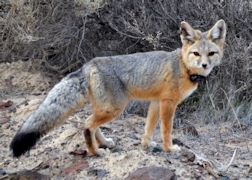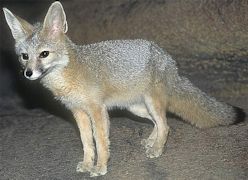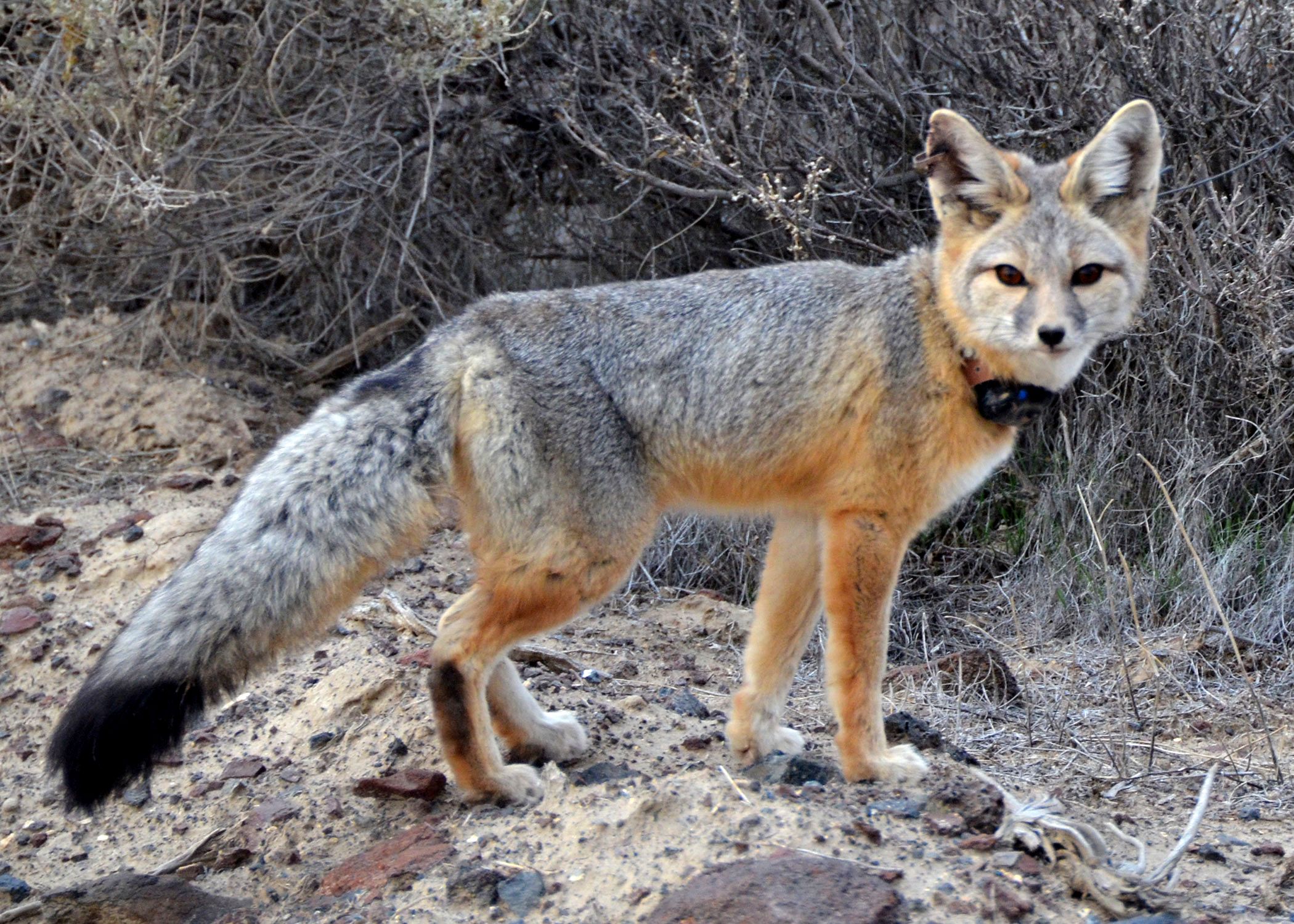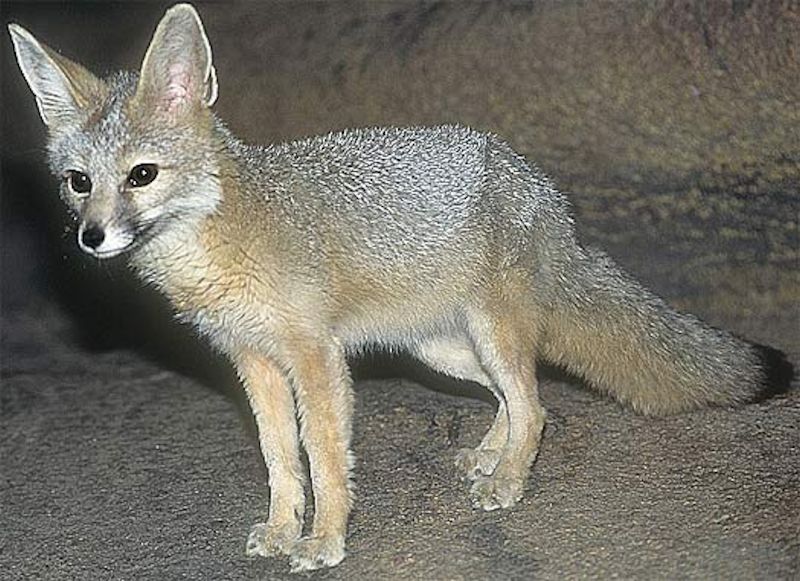Wolves, Foxes, and Coyote
Description
Yellowish buff above, whitish below. Tail with black tip and often a black spot at upper base. Feet light-colored. Ears large, triangular. Dark spots below eye. Ht 11 3/4" (30 cm); L 24–31" (60–80 cm); T 9–11 3/4" (23–30 cm); E 3 1/8–3G0 (7.9–8.4 cm); Wt 3 1/8–6 lb (1.4–2.7 kg).
Endangered Status
The San Joaquin Kit Fox, a subspecies of the Kit Fox, is on the U.S. Endangered Species List. It is classified as endangered in California. Before the 1800s, the grasslands of California were second in size only to the Great Plains. Today only 1 percent of the state's native grasslands remains. The San Joaquin Kit Fox is a grassland and scrubland inhabitat and has suffered from the modification of these habitats. Industry, development, and various types of agriculture (in the forms of row crops, orchards, vineyards, and livestock forage) have taken over many of these lands. Suitable remaining habitats are fragmented, meaning the foxes occur in small and isolated populations. These small numbers make the everyday dangers of life in the modern-day wild -- predators, starvation, flooding or drought, poaching, automobiles -- even more significant than they are in a healthy and widespread population.
Sign
Den: Underground, with 3 or 4 entrances 8"
(200 mm) wide; usually with mound of earth at entrance; sometimes
scattered with small bones or scraps of prey.
Scat: Small,
irregular, cylindrical.
Tracks: Similar to those of Common Gray
Fox but usually less than 1 1/2" (40 mm) long. All prints show 4
toes and claws.
Habitat
Shortgrass prairies and other arid areas.
Range
Southern Alberta, Saskatchewan, and Manitoba south through e Montana and Wyoming, ne Colorado, the Dakotas, Nebraska, w Kansas and Oklahoma, e New Mexico, and n Texas; s Oregon and sw Idaho south through Nevada and w Utah to s California and Arizona.
Discussion
Once considered separate species, the Kit Fox and the Swift Fox have been combined as Vulpes velox. For short distances, this species can run as fast as 25 mph (40 km/h), hence the name Swift Fox. Solitary and mostly nocturnal, it eats rabbits, ground squirrels, rats and mice, birds, insects, grasses, and berries; in winter, it caches food under snow. This species usually mates for life. It excavates its own den or enlarges an American Badger or marmot den in open country. The young are born in a chamber 3 feet (1 m) belowground with no nesting material. The calls of the Kit Fox include a shrill yap, and several whines, growls, and purrs. This animal tries to evade predators such as domestic dogs and Coyotes by entering a burrow or suddenly changing the direction of its flight.




